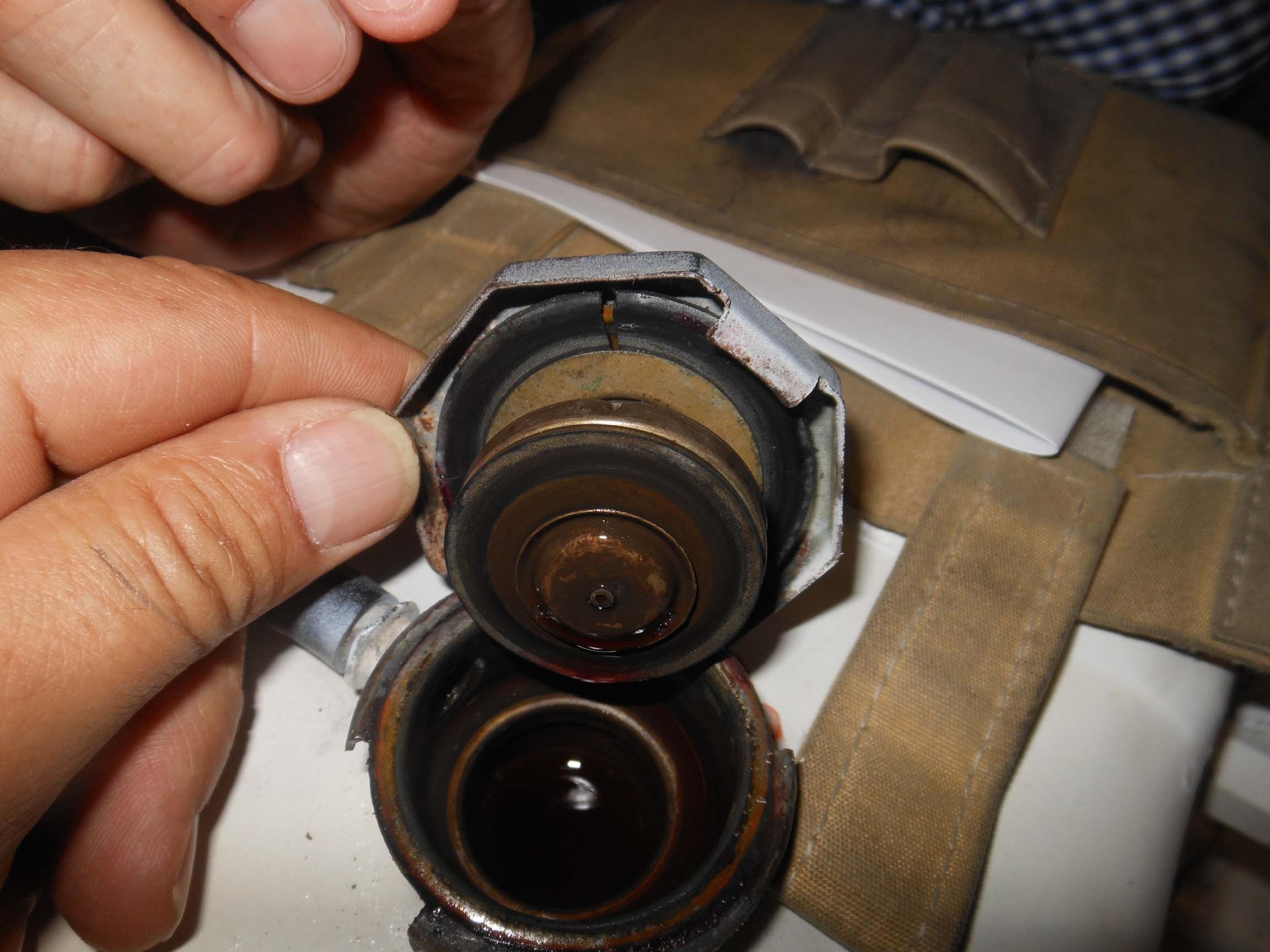Photo Essay: Closed Cooling Systems
Text and photo by Steve D’Antonio
Copyright SDMC, Inc. May 2015
The closed or pressurized cooling system offers several worthwhile benefits, including raising the coolant boiling point, and keeping the system free of air, while reducing cavitation. The latter can scour metal from cooling passages, weakening engine blocks and cylinder heads, and leading to premature circulator pump failures. From a pressure perspective, for every pound of pressure that the system operates under, the boiling point (of water) is raised three degrees Fahrenheit. Therefore, a fifteen pound pressure cap raises the boiling point 45°F, affording an additional margin against boiling and overheating. Most closed cooling systems operate at somewhere between six and fifteen pounds per square inch. The pressure is maintained and regulated by the pressure cap, which is typically located on the cooling system’s metallic expansion tank (the tank may be remotely located above the engine if the vessel’s water heater heat exchanger is located above the main pressure cap). Pressure caps are typically embossed with a pressure rating, which is calculated by the engine manufacturer. Under no circumstances should a pressure cap be replaced with one other than what’s been specified by the engine manufacturer.
Pressure caps that are designed to operate with recovery bottles include two rubber gaskets, two springs and a check valve. If the engine was originally delivered without a recovery bottle, then the cap’s upper, larger “gasket” may in fact be a brass disc, which intentionally does not form a liquid or air tight seal, this cap will not work with a recovery bottle, however, it is interchangeable with double gasketed caps that will enable the use of the recovery bottle. More on coolant recovery bottles here.
For the double gasketed cap arrangement, when the engine is operated the coolant heats up and expands, when it reaches the pressure rating of the cap, the primary spring is compressed, allowing coolant to flow past, through the filler neck and into the discharge spout. If the spout is connected to a coolant recovery bottle, via a length of hose, the coolant will be captured. When the engine is shut down, the coolant cools and contracts, creating a vacuum within the cooling system. When a high enough vacuum is achieved, it overcomes the second spring in the cap, one that is associated with a check valve. Coolant flows from the recovery bottle, past the valve and back into the engine’s cooling system, keeping it full and air-free. Caps and the filler necks into which they are screwed should be inspected periodically; look for deterioration of the rubber gaskets, broken springs, corrosion, dents or cracks. Provided the proper cap is used, a recovery bottle can be added to any closed cooling system.
Your cooling system pressure cap should be checked periodically; look for deterioration to the gaskets, spring and check valve. If you look carefully at this month’s photo, you can see the larger, upper gasket is split, which will prevent the system from drawing coolant back in to the engine as it cools.
For more information on the services provided by Steve D’Antonio Marine Consulting, Inc. please e mail Steve at info@stevedmarineconsulting.com or call 804-776-0981.



